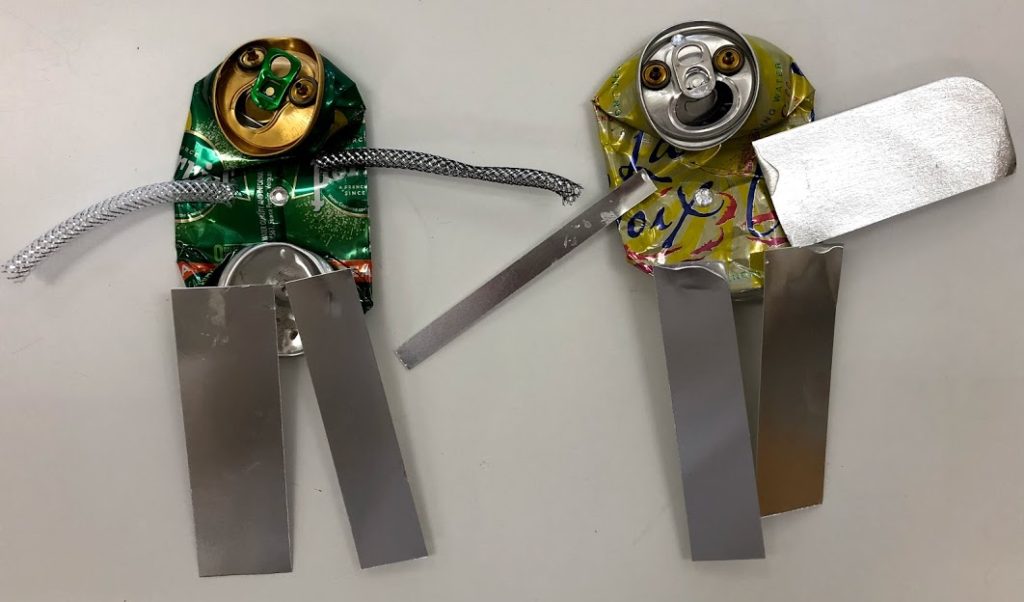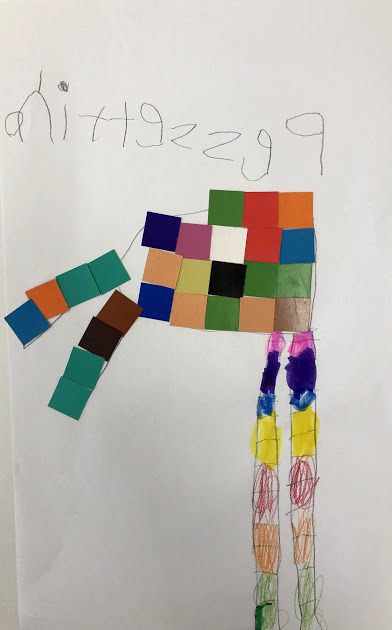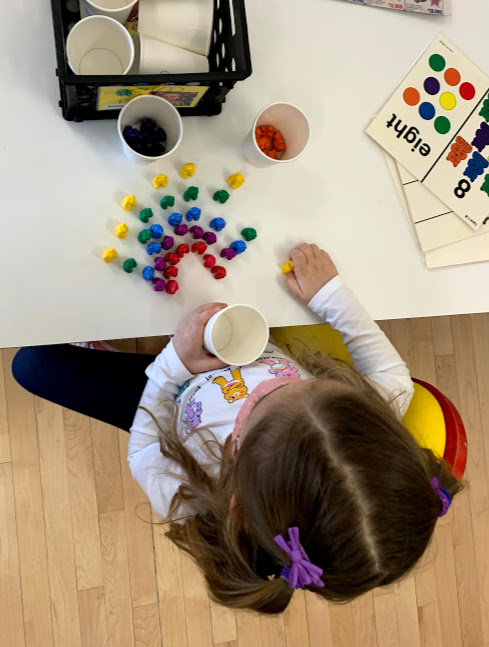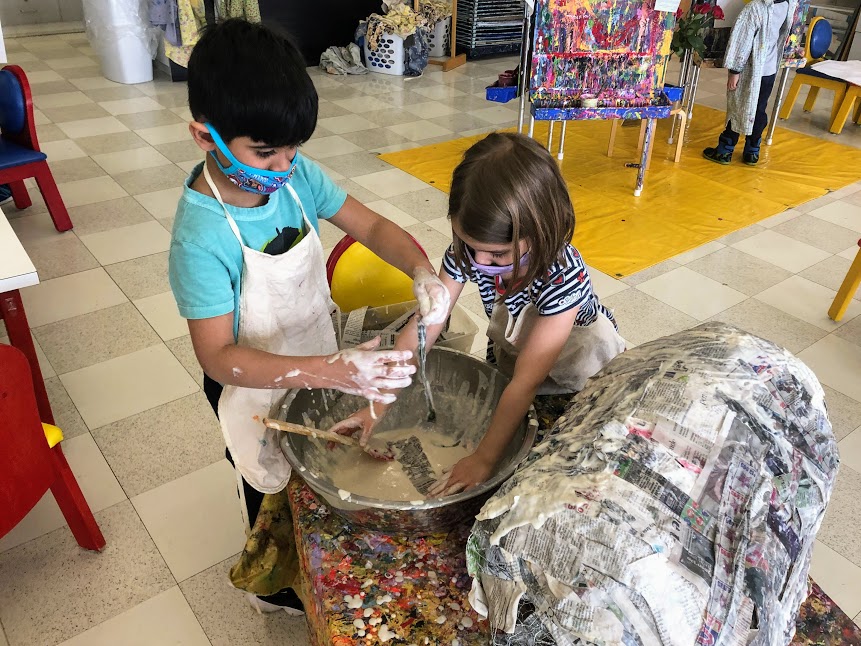We held class at The Art Preserve of the John Michael Kohler Arts Center in February and again in March. We began our visit by examining the exterior architecture of the building and sketching it for our journals. We covered a lot of ground on our first visit, but our main focus was on the works of art by Frank Oebser and Mary Nohl. After observing and discussing their art, watching a video on Frank Oebser, and reading the story, In Mary’s Garden by Tina Kugler, we were definitely feeling inspired to create our own art.
Combining our interest in the Chinese Lunar Zodiac, which was celebrating the Year of the Metal Ox, and the art of Frank Oebser, we began creating our own papier mache ox. Our fascination with Mary Nohl’s love of driftwood and sculpture, prompted us to begin creating our own driftwood stick figure as well. The children built their own tall wooden sculptures that were also reminiscent of Mary Nohl’s art. We left the Art Preserve feeling excited and energized and definitely eager to return.
The topic of opposites was particularly important, as we brainstormed opposite words, played opposite games, and even painted contrasting black and white letter Oo’s that demonstrated our understanding of opposites. Octopus easel paintings and watercolor/oil pastel ocean scenes, as well as owl and ox drawings, helped further reinforce the sounds made by the letter Oo. Our collaborative papier mache ox, inspired by Frank Oebser’s animal sculptures, began taking shape, and books, such as Olivia, Olivia’s Opposites (both by Ian Falconer), and Owl Babies by Martin Waddell were other means of exploring the letter Oo.

Pp Week was enthusiastically anticipated by everyone, as Pajama Day with pancakes served as the grand finale. The build-up to that day was filled with many P-projects, as we printed with puzzle piece printing plates, created colorful shape characters inspired by the book Pezzetino by Leo Lionni, painted penguins and pandas, and visited the ceramics studio to create clay pockets and glaze our Ll week Japanese-inspired lunch sets. We added snowflake textures to our pockets, designed our own snowflake ornaments, and talked about what makes snowflakes special. How many points does a snowflake have?

During Qq week, quails, queens, and the “quiet” permeated our stories, as we read: The Very Quiet Cricket by Eric Carle, An Egg is Quiet by Dianna Hutts Aston, and Quail Song by Valerie Scho Carey. After reading the story Quill Soup by Alan Durant, the children learned about the Native American tradition of quilling and created their own paper-quilled bookmarks. We even examined real quills harvested by Miss Keely from actual porcupines.
The children created their own COVID molecules out of clay. Our quilt project began individually as each child designed their own cardboard quilt triangles, and then became a collaborative work when the children combined all their triangles together. Another project that began individually and then became collaborative was our own version of Emery Blagdon’s Healing Machine we experienced at the Art Preserve.

We were ready and raring to go once Rr Week rolled around. Paintings of roses and still life sketches of roses dominated our easels and journals. Robot drawings and actual robot sculptures were other projects that ruled the roost this week. As we began noticing some signs of spring outside (particularly the welcome sight of robins), we sculpted and painted a variety of colorful birds. Rr week and its beautiful weather, led to walks down to the river and alphabet scavenger hunts through the city streets. We were definitely ready for spring to make its great reveal.
Our Spanish classes over these past few weeks have continued to focus on animals. As we have learned more verses of our song, we have covered such vocabulary as: pez (fish), mono (monkey), oso (bear), elefante (elephant), rana (frog), conejo (rabbit), gato (cat), perro (dog), gallina (chicken), and pollito (chick.) We have also been distinguishing between Buenos días (Good morning), Buenas tardes (Good afternoon), and Buenas noches (Good night).
In Music, we learned a song about Mary Nohl. The children both sang and signed the words. Check out Google Classroom for the lyrics. The melody is taken from the song “Mary Had a Little Lamb.”
American Sign Language is becoming a strong skill that the children use throughout the day. We have begun to learn the signs for each letter in our name and have continued to practice signing numbers one to ten. We moved to the next animal category and started learning the signs for farm animals. The children used sign language as they sang along to the song “Bingo” and added different farm animals to each verse. Have your child show you the signs for cow, pig, horse, chicken, duck, rabbit, dog, and frog.

















